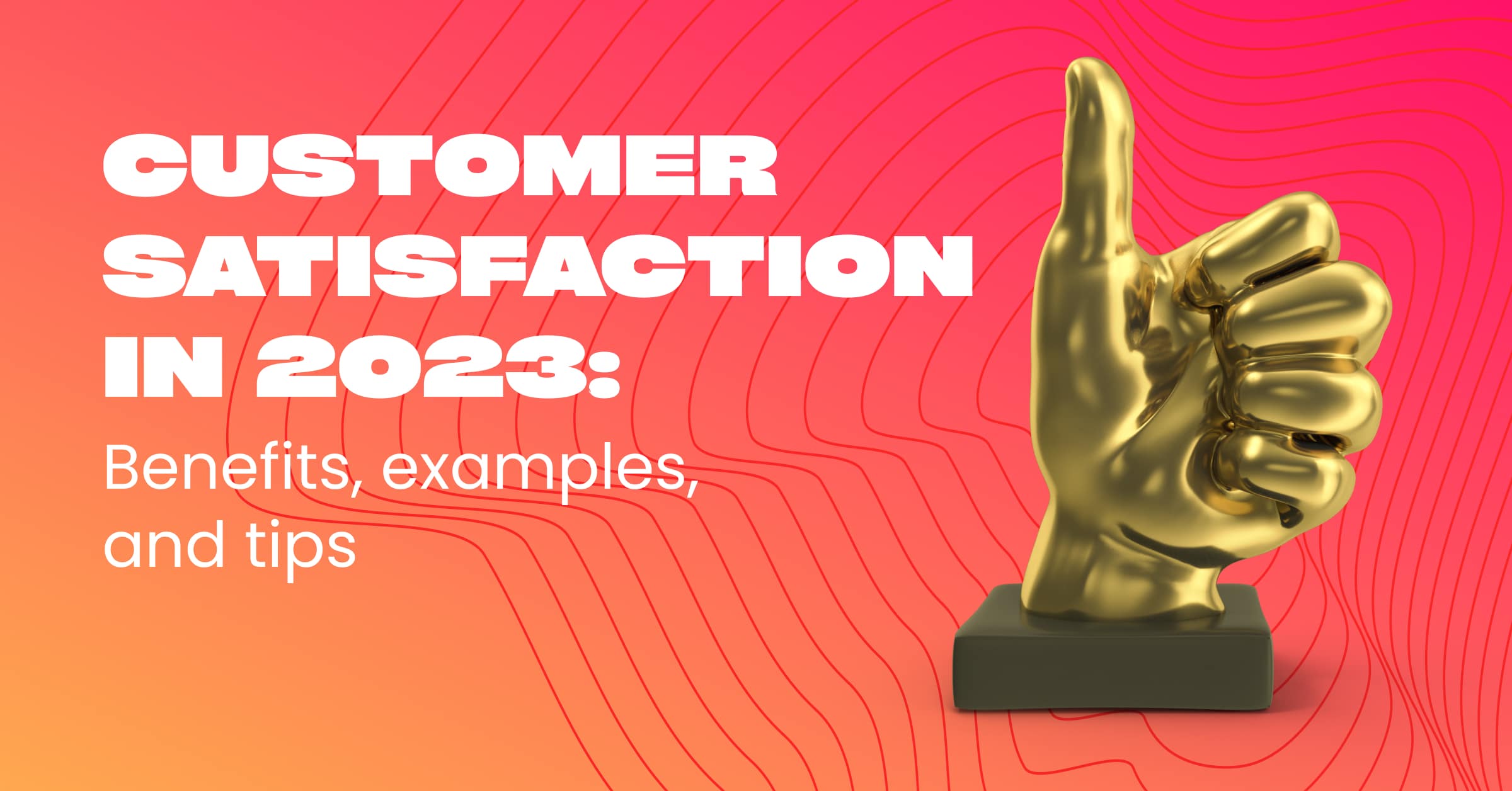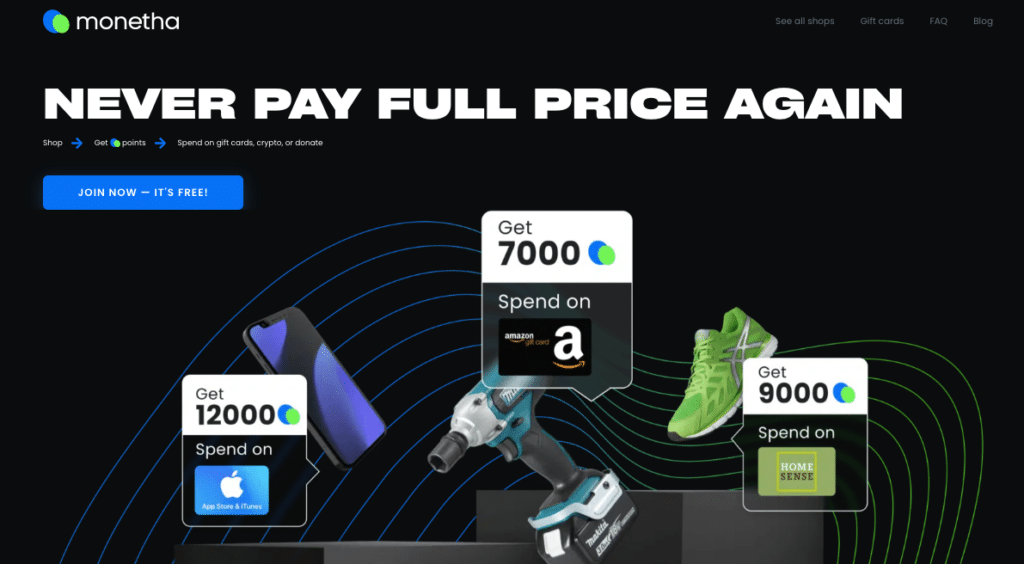Customer satisfaction (CSAT) is the greatest weapon in the armory of any business. It’s as simple as that.
A satisfied customer will do more for your business than any advertising campaign could ever manage.
Fully satisfied customers will return, they’ll spread the news, they’ll expound on the qualities and the positives of your product or service, and they’ll elevate the profile of your brand without you even having to ask.
Customer satisfaction in 2023, or 2053 for that matter, promotes customer loyalty and loyal customers should be the goal of every business that wants to succeed.
Your perfect loyalty program
Keep your customers satisfied – it all starts with just a few clicks.

What is customer satisfaction?
Customer satisfaction can be described as an accountable measure of how well a company’s products or services meet the customer’s expectations.
OK, that might be what the dictionaries say, but in practice, there’s a lot more to satisfied customers than a person using a product or service and saying “Gosh, that’s good”.
To define customer satisfaction a little deeper, the business owner needs to start at the very beginning of the customer’s journey.
-
- They need to reach out to the customer – usually even before the customer is aware of the company’s existence
-
- They need to completely understand the problem that the customer needs to solve
-
- They need to present a viable solution to the customer’s problem
-
- They need to be aware of the customer’s spending power to overcome their problem
-
- They must prioritize the customer’s problem as being the only thing that matters to them
-
- They need to connect with the customer in a tone – or environment – that’s appropriate to that customer alone (first impressions are important)
-
- They need to realize that there are competitors to the service they offer and be aware of every one of them
-
- They need to counter any customer concerns with true and proven facts and figures – not information designed to make the sale regardless of the consequences
-
- They need to close the sale in a way that suits the customer – payment options, delivery dates, offering additional services that go above and beyond, and ensuring that the product really solves the customer’s problems
-
- They need to make follow-up calls/visits to keep the customer’s journey alive and real
-
- They need to make subsequent offers of staff training, offer additional information, send invitations to seminars or events, arrange meetings with other product owners, offer upgrades and add-ons when they become available, and generally ensure that once the sale is completed that the customer still feels a connection with the company
-
- They need to follow up with regular customer satisfaction surveys and act on the information provided
It's all about loyal customers
We provide the easiest way for growing brands to start a loyalty program. Fast, easy, effective!
Even if you think you’ve done everything right, customer satisfaction can be ruined by something as trivial as a late reply to a query, an unfulfilled promise, or even using the wrong name in correspondence.
The route to customer satisfaction in 2023, as it has always been, is never based on one factor alone, but on a combination of many variables that must be kept to the forefront at all times.
One of the main ways of doing this, and of understanding and measuring your customers’ satisfaction is with the use of customer satisfaction surveys that cover every step of the sales journey – from pre-sale to post-sale.

Why is knowing the level of customer satisfaction so important?
It is usually cheaper to retain existing customers than it is to acquire new ones.
However, the rise in remote interaction and remote service has also introduced the phenomenon of the remote customer.
During the height of the global pandemic, sales executives were unable to meet their clients face-to-face and new lines of communication had to be introduced.
Zoom calls, webcasts, virtual meetings, and online product launches became the norm. Because of this, many companies lost the one true asset that they had relied upon for decades – human interaction and instant evaluation of customer satisfaction.
That’s why measuring customer satisfaction, increasing loyalty levels, and improving customer satisfaction has never been as important as it now and will be throughout 2023.

Examples of customer satisfaction
You might think that you have the customer sales journey nailed but are you sure that you’re managing every stage of the sales pipeline with customer satisfaction in mind?
For example, you might have aced the online shopping experience, only to ruin the whole experience by failing to deliver the goods or service in the stated time. Result? Unhappy customer.
But what are some examples of customer satisfaction managed properly?
Getting to know your customer
Not every company can afford the luxury of talking directly to every customer. But when there’s a problem nothing is going to solve it better than taking the personal approach.
Spending time getting to know a customer, by email or over the phone, can make all the difference in creating a feeling of greater satisfaction.
How often have you heard a friend or family member say something like this? “The lady who called me from X Company was so nice and made sure that my goods were shipped the same day. She even called me back to make sure that the delivery arrived on time.”
Not only did that phone call make the customer feel special, but it also created a positive impression in the mind of the third party.
Keeping the customer in the loop
When a crisis strikes, be that a global pandemic or local delivery issues, notifying your customers can go a long way towards improving customer satisfaction.
Even if the pandemic meant that in-store shopping was no longer viable, sending the right message about what measures the company was taking to reduce the risks for the customer showed them in a positive light.
Whether pandemic or local issues, keeping the customer up to speed with what’s happening on the ground will go a very long way to increasing the level of customer satisfaction.

Reacting to poor performance
Things go wrong and sometimes that can’t be helped.
Whether it’s a customer service person who had a bad day, a delayed product delivery, shipping the wrong goods, or any of a hundred other reasons, how your company reacts will make all the difference.
Whatever the reason for having unhappy customers, your company will need to react in the right way as soon as possible.
If you want your customers to stay happy, and more importantly loyal to your brand, you don’t want them to be disappointed for any reason.
However, on the rare occasion that it might happen, you should consider offering a discount, a free replacement, or some other freebie. You should also let them know how the problem occurred and the steps you have taken to ensure that it doesn’t happen again in the future.

\n
<\/p>\n
There are many other ways of increasing customer satisfaction, from a friendly welcome to extensive advertising campaigns. Every company \u2013 and its employees \u2013 are different, so what works for one company may or may not work for another company.<\/p>"}}]}

Conclusion – make your customers happy
Nobody wants unhappy customers, but understanding customer satisfaction is not as easy as many business owners think. They should never assume that they know everything about their customers and constantly strive to build deeper relationships.
It is vitally important to use tools such as customer satisfaction surveys, automated reply systems, focus groups, social media, and even rewards programs like Monetha to fully engage their customers and understand their wants.
The more you know your customer expectations – customer feedback will help you to understand that better – the greater their level of customer satisfaction. The result? Happy customers.
And never forget, that every member of your team, regardless of the position or rank within the company, plays an important part in maintaining and growing customer loyalty towards your brand, product, or service.
<\/p>\n
There are many other ways of increasing customer satisfaction, from a friendly welcome to extensive advertising campaigns. Every company \u2013 and its employees \u2013 are different, so what works for one company may or may not work for another company.<\/p>"}}]}









